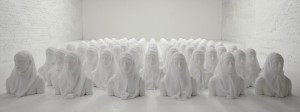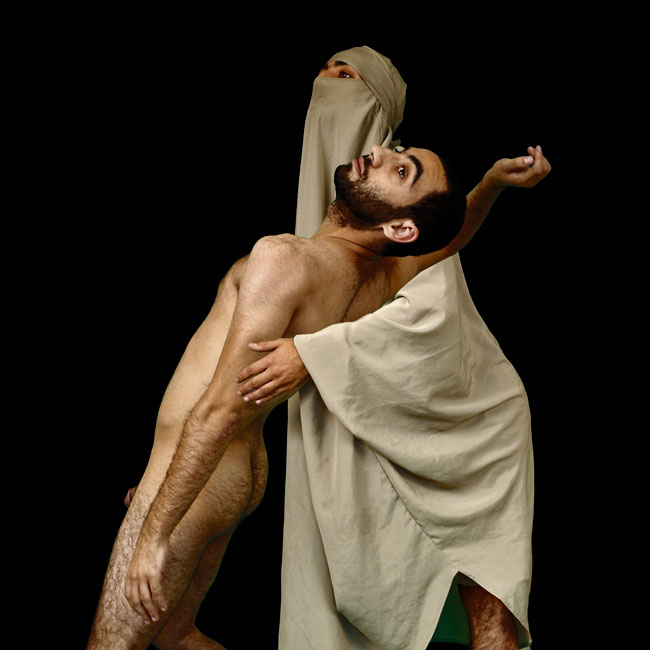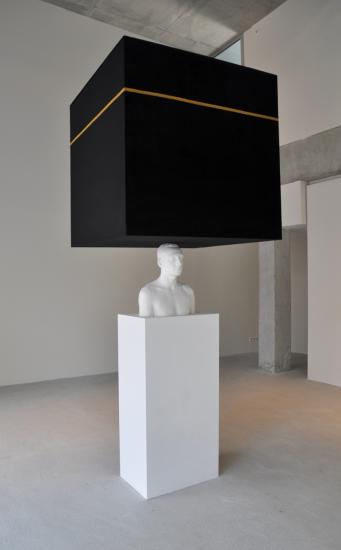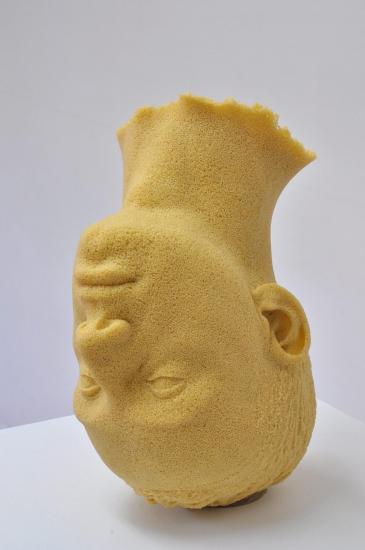
MEHDI-GEORGES LAHLOU, FRENCH-MOROCCAN
72 Vierges, 2012
About:
Raised both Islamic and Catholic, Mehdi-Georges Lahlou uses performance and installation work to investigate the tensions and taboos within his two religions. He is particularly interested in sensitive issues like sexual identity, the modification of one’s body, and the improper use of religious texts and objects. A recurring motif in his work is the red stiletto, which he considers both a totem of sexuality and a symbol of consumer culture. Though his works regularly provoke, Lahlou insists that his work is not a political statement: “I want people to be in an awkward position and not know what’s happening, whether it’s humor or reality, true or false. I lean toward being stupid because I don’t want to make people think that I am saying bad things.” (artsy.net)
Tango, 2010.
With his French-Moroccan dual citizenship, and with a Muslim father and a Catholic mother, Mehdi-Georges Lahlou easily crosses lines in multicultural societies. In both his performances and his visual works, he challenges specific aesthetics, especially those associated with Islam, and addresses broader questions, such as identity — religious, cultural, and sexual.
Equilibre à la Kaaba, 2013
Head, 2013.
Pour les Siecles des Siecles, 2013.
Messe pour un Corps ou Autoportrait aux Livres, 2010.
“The representation of symbols linked to Muslim religious practice is very problematic today, even though images, especially advertising images, are now fairly well assimilated in countries such as Morocco. It is taboo to use or appropriate the religious aesthetic. This is one of the reasons my work may be misunderstood and seen as scandalous. Indeed, appropriation, association, representation, parody, and other uses of the symbols of Islam form a central issue in my work. There are practically no studies of this type in Muslim countries. Given this lack, my work questions whether there is a need to establish such research in these cultures. If the answer is yes, are Western theories, instituted generally by feminists, adequate? Let’s not forget that homosexuality and other ‘deviant’ sexualities are banned and repressed in most Muslim societies and under their ideologies. Social sexuality is the most dangerous subject in new contemporary Islamic societies.” (Excerpt of an interview with Frédéric Herbin, available online atacademia.edu/9623423/Entretien_avec_Mehdi-Georges_Lahlou.)





